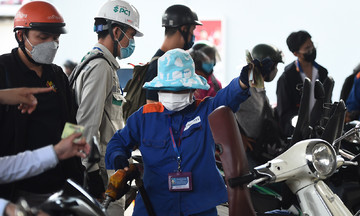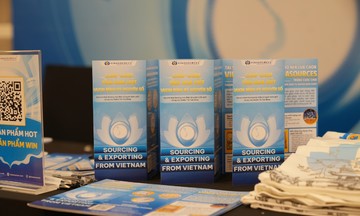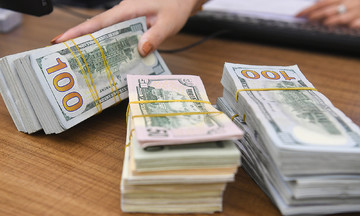"I never thought pineapple leaves could be turned into fiber and woven into the shirt I'm wearing today," said Tran Xuan Tuan, the second generation in a family with over 30 years of pineapple farming experience in Thanh Hoa, at the "Mac Thom" (Wear Pineapple) event held in Ho Chi Minh City last week.
Tuan is one of the farmers from 200 hectares of pineapple fields in Thanh Hoa, Nghe An, and Kien Giang provinces who are supplying pineapple leaves to a group of businesses (Ecosoi, Trung Quy, and Faslink) to produce environmentally friendly fabrics.
According to Faslink, for every hectare of pineapple converted to this production model, farmers can increase their income by about 60 million VND. Le Thi Nhung, a farmer from Nghe An, has been selling pineapple leaves for fiber production for three years. "I can sell the fruit, the leaves, and the shoots, increasing my income. I'm very happy about it," she said.
Vietnam has approximately 42,000 hectares of pineapple farms, concentrated in Thanh Hoa, Ninh Binh, Nghe An, and the Mekong Delta provinces. In addition to the harvested fruit, the leaves, with an output of nearly 1.7 million tons, are often considered waste.
In Thanh Hoa, farmers like Tuan usually mulch and burn the leaves. Some families with larger farms spray herbicides before disposal. "If we don't burn them, we don't know what to do with all those leaves," he explained.
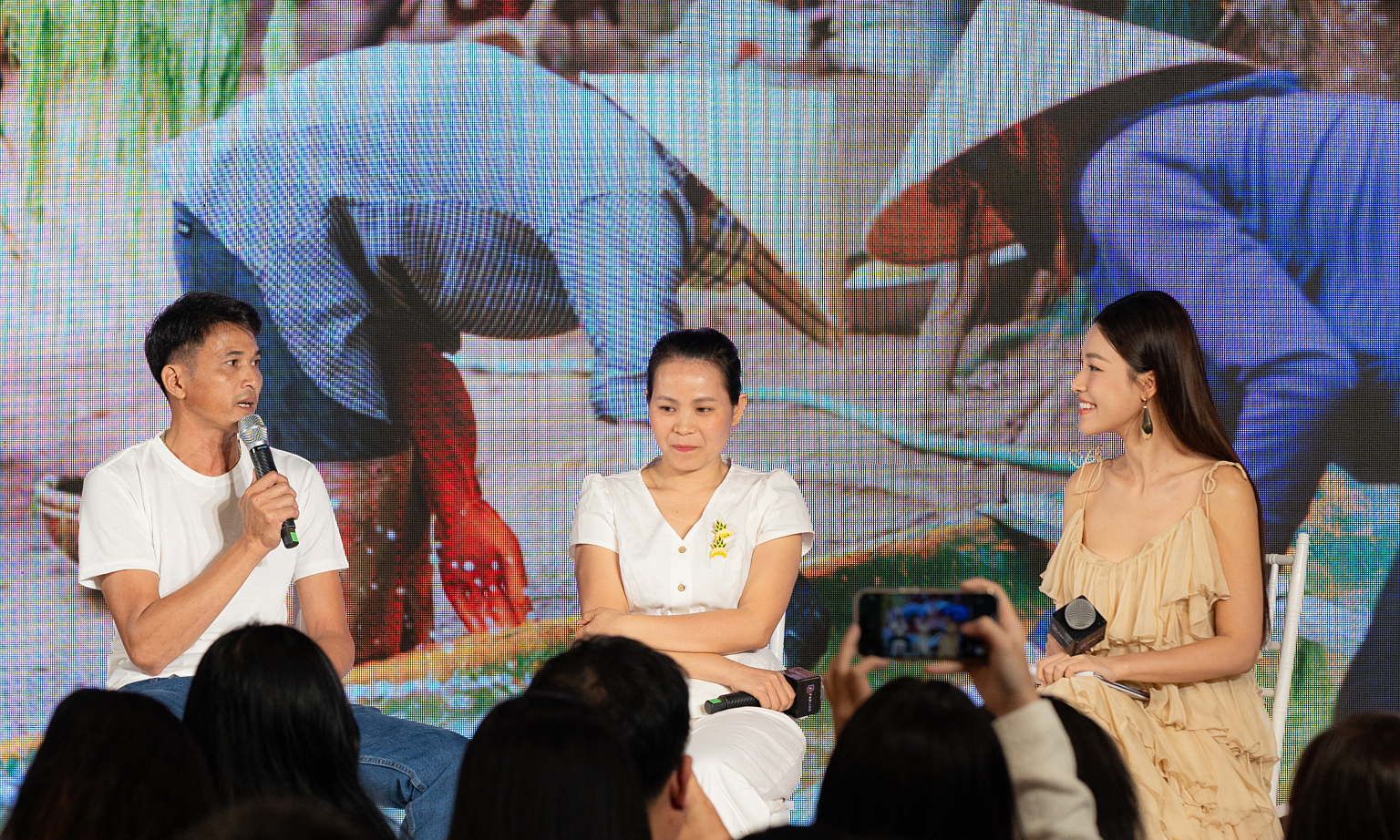 |
Tran Xuan Tuan and Vu Thi Lieu (center) at a presentation about pineapple fiber fabric in Ho Chi Minh City. Photo: PinaLina |
Tran Xuan Tuan and Vu Thi Lieu (center) at a presentation about pineapple fiber fabric in Ho Chi Minh City. Photo: PinaLina
Vu Thi Lieu, founder and CEO of Ecosoi, explained that most farmers choose to burn the leaves because they are thorny and tough, making grinding them into fertilizer or animal feed costly. Lieu, an environmental expert, has participated in projects with the Ministry of Natural Resources and Environment (now the Ministry of Agriculture and Environment), UNDP, and the World Bank.
"Burning pineapple leaves emits a lot of CO2, and I'm concerned about chemicals potentially leaching into the groundwater," she said. Seeking a solution, she realized the only way was to transform the leaves into a product with economic value so farmers would stop burning them.
Recognizing the high cellulose content in pineapple leaves—a natural fiber known for its durability, breathability, and moisture absorption—Ecosoi began developing a pineapple fiber extraction machine in 2021 and gradually upgraded it to automated versions for large-scale production.
They are committed to processing pineapple leaves using a chemical-free mechanical method. According to the company's self-reported data, producing 1 ton of pineapple fiber uses about 60 tons of fresh leaves, reducing CO2 emissions by more than 17 tons, primarily by eliminating burning.
"When we offered pineapple fiber for sale, people praised the product but didn't buy it because they didn't know what to do with it," Lieu said. Therefore, the startup further developed the process, spinning the fiber into yarn and weaving it into fabric. They collaborated with fashion designers like Vu Viet Ha to create practical clothing.
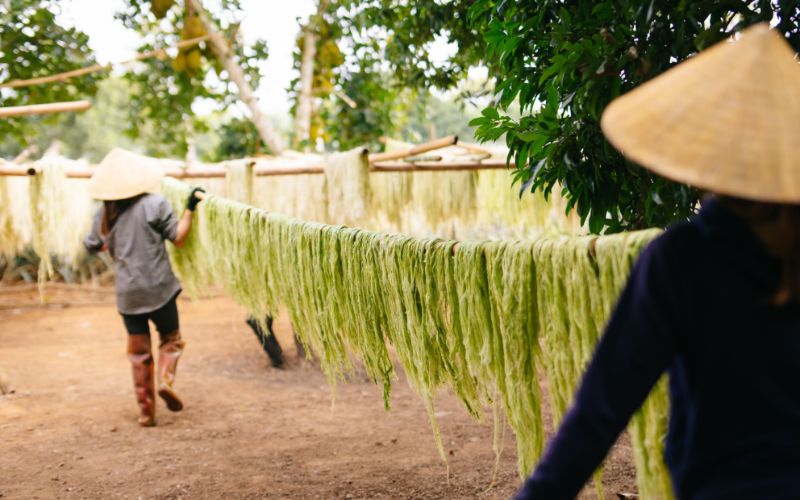 |
A processing step in pineapple fiber production. Photo: Ecosoi |
A processing step in pineapple fiber production. Photo: Ecosoi
When the fashion collections were showcased in Japan, Switzerland, and the UK, Ecosoi started receiving inquiries from international buyers. As a result, their products reached Japan, South Korea, the US, and Hungary. However, it wasn't until they partnered with Faslink, a company specializing in sustainable fabric development and supply, that Ecosoi secured its first domestic order. To build a complete supply chain for pineapple leaf fiber fabric, the two companies joined forces with Trung Quy, forming an Open Innovation model.
Under this model, the pineapple fiber produced by Ecosoi is blended with cotton fiber and woven at Trung Quy. This company holds international certifications like GRS, GOTS, and Oeko-Tex, and their process uses fewer resources than traditional synthetic materials, consuming only 280 kWh and 23 m3 of water to produce a ton of yarn and generating no microplastics.
The initial versions of the pineapple fiber fabric felt coarse. To address this, Tran Van Quy, CEO of Trung Quy Group, explained that they use physical and chemical processes (without chemicals) to soften the fiber, ensuring less than 5% shrinkage and a soft feel. They have now perfected lightweight, breathable, linen-like, fully biodegradable pineapple fiber fabrics, branded as PinaLina.
Within the value chain, Faslink plays a coordinating role, from material research and design to branding and customer acquisition. Founder and CEO Tran Hoang Phu Xuan stated that the pineapple fiber fabric has garnered interest from partners in Vietnam, Japan, the US, and Europe. She revealed that three local fashion brands have expressed interest in collaborating, and a leading construction company has placed an order for uniforms made from pineapple fiber fabric.
"Several local fashion brands are currently testing our pineapple fiber fabrics for their 2025-2026 collections," Xuan said. Clothing and accessories made from this material are expected to hit the market in August and September.
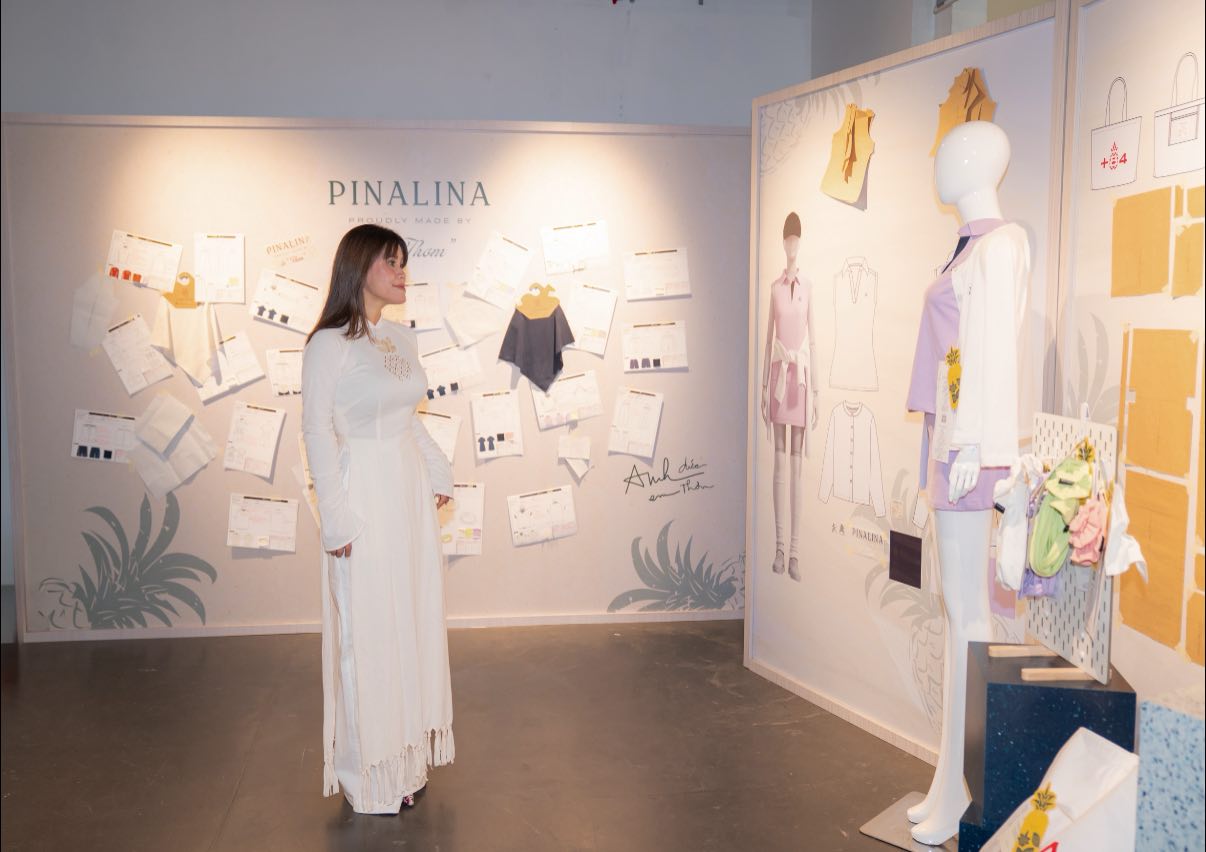 |
Faslink founder and CEO Tran Hoang Phu Xuan at the pineapple fiber clothing exhibition. Photo provided by the interviewee |
Faslink founder and CEO Tran Hoang Phu Xuan at the pineapple fiber clothing exhibition. Photo provided by the interviewee
However, for international customers to embrace "green" fashion products made from pineapple leaf fiber, the collaborative group still has much work to do, from marketing to building trust. In addition to expanding collaborations with designers, fashion brands, and retailers, Xuan said their chain also aims to build an ecosystem of consumer products. Their first clothing collection, "Mac Thom," is currently being exhibited in Ho Chi Minh City and is set to be marketed in the US this month and Japan in October.
"Furthermore, we are constantly striving to find ways to protect the entire production process, from raw materials to finished products," Xuan added.
Therefore, they plan to use blockchain technology to track the entire supply chain according to LCA (Life Cycle Assessment) standards. "In the current global fashion industry, having an LCA gives us confidence in any market, and customers can also choose with peace of mind," she said.
Vien Thong



